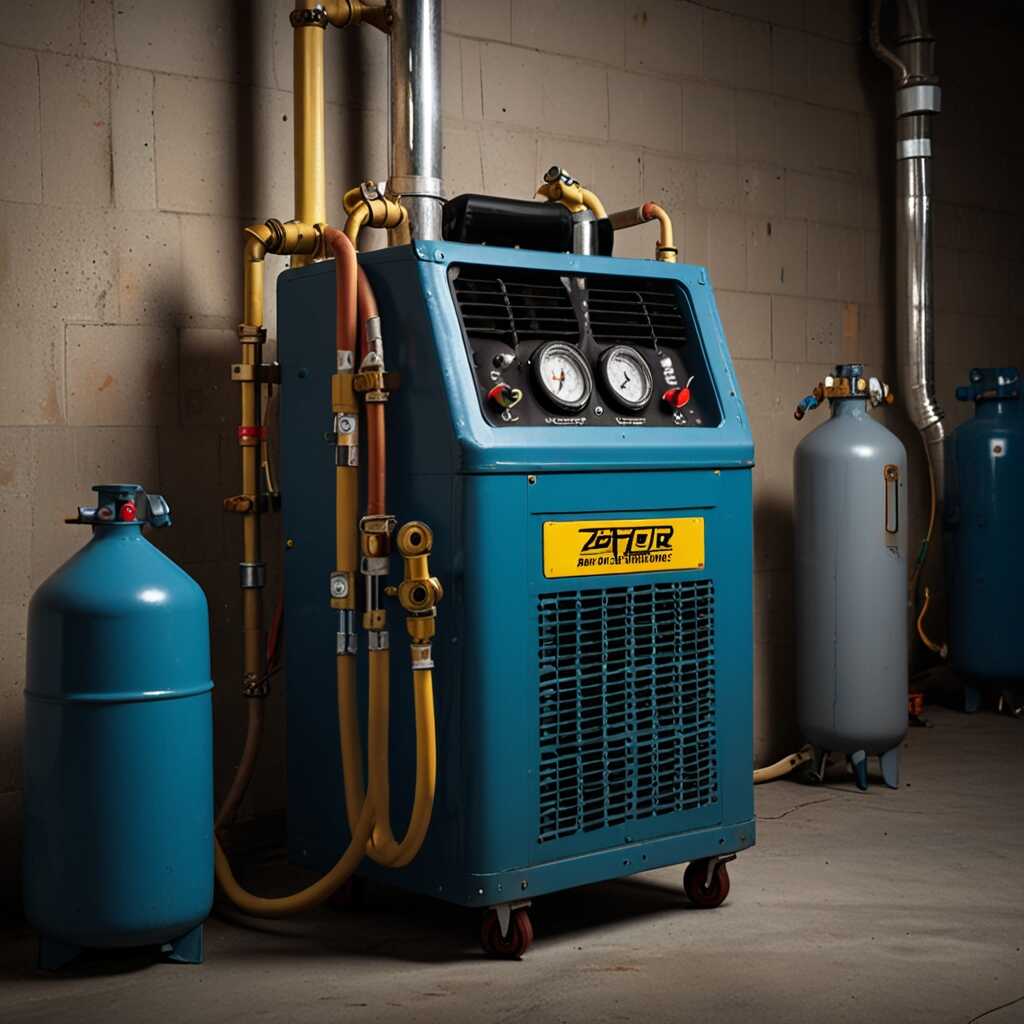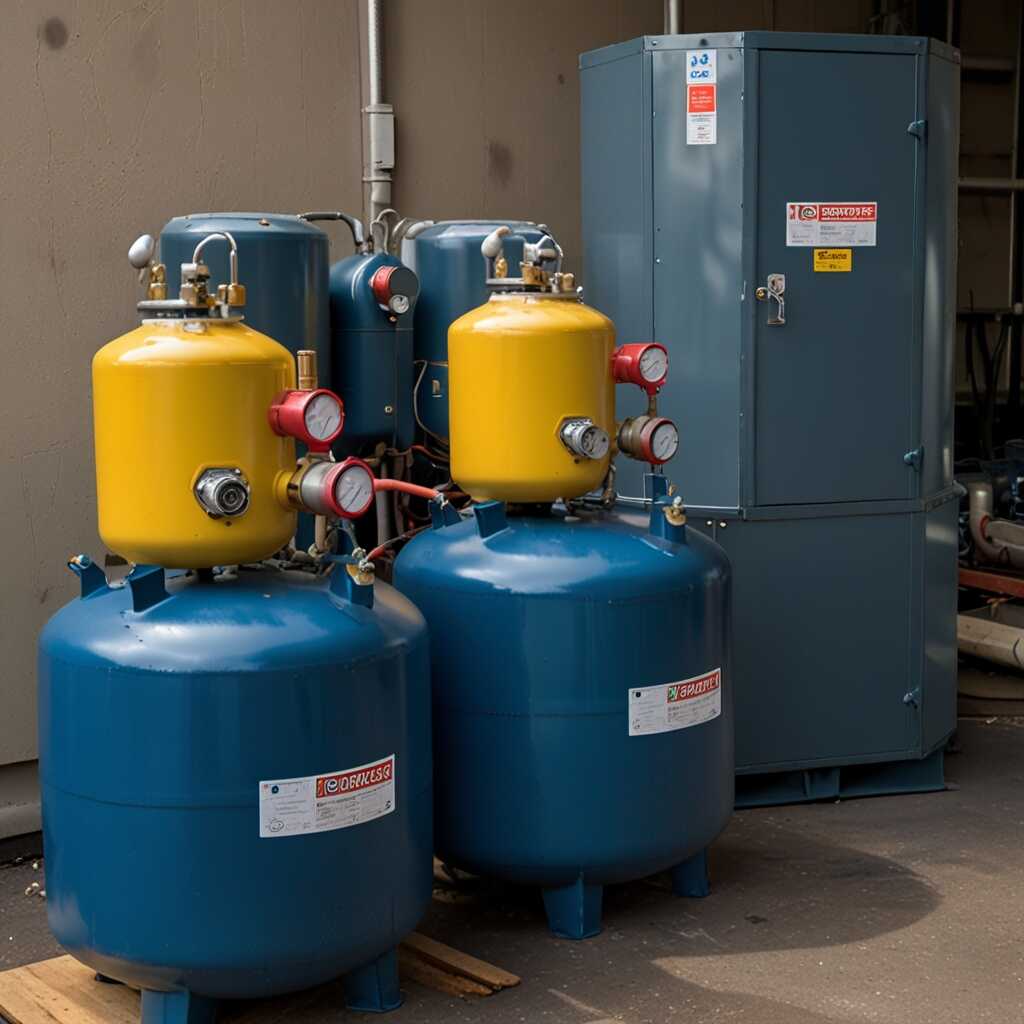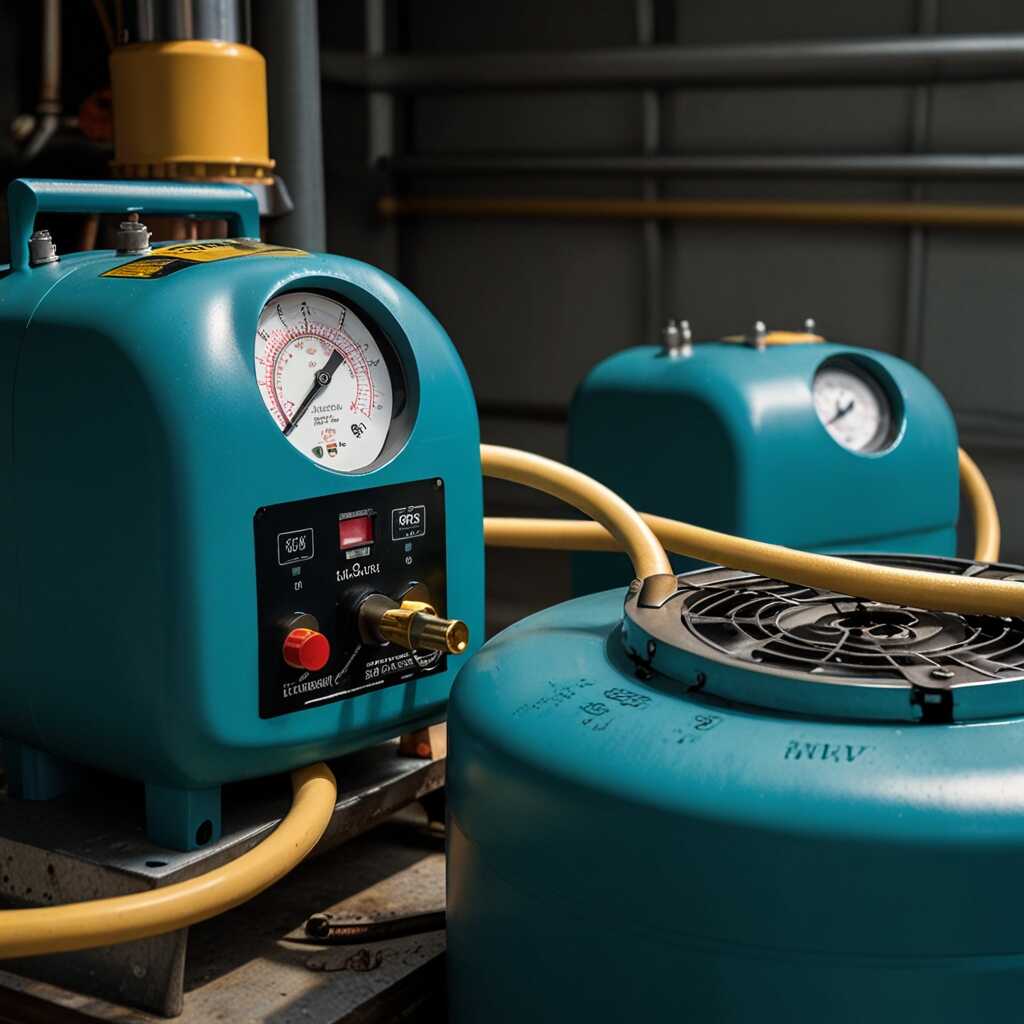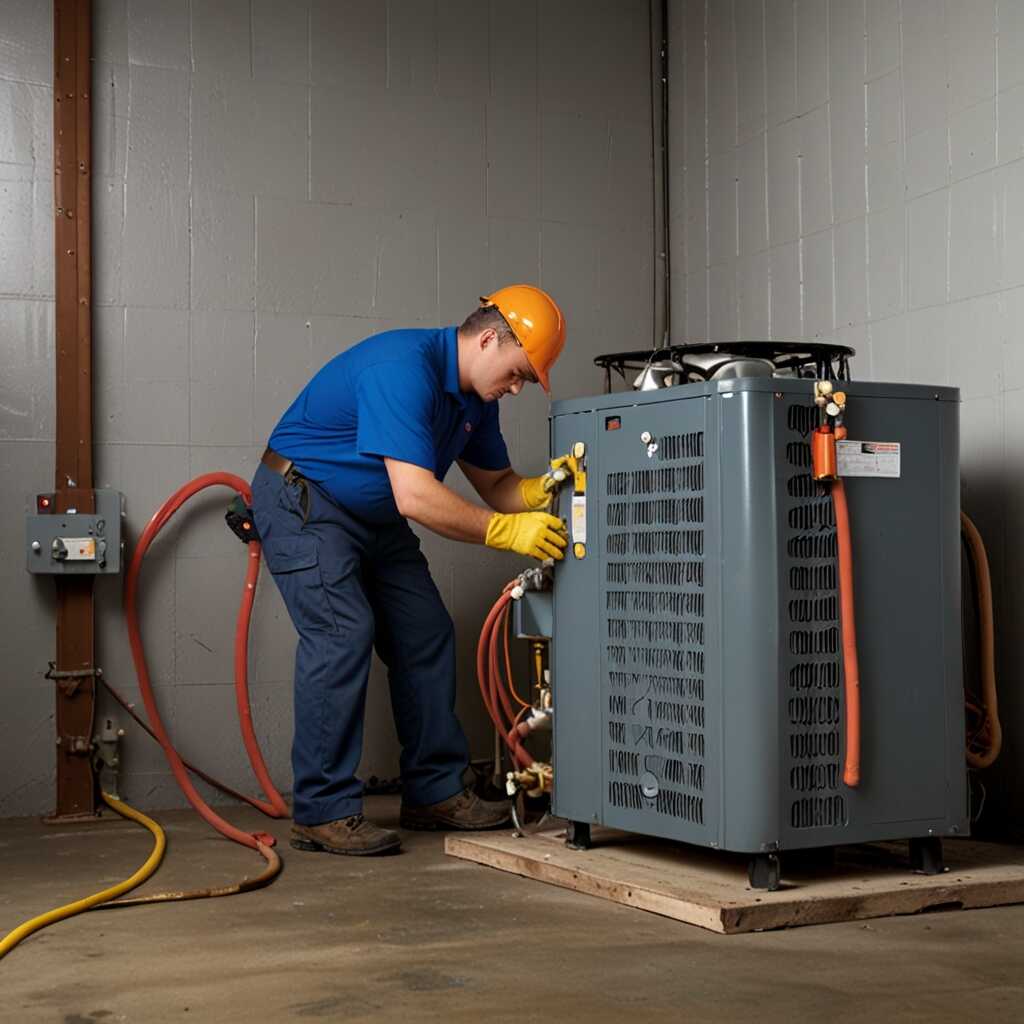Refrigerant recovery machines with multiple inlet ports redefine parallel recovery efficiency for HVAC applications. These advanced machines enable technicians to recover refrigerants from various sources simultaneously, significantly speeding up the process. At Refrigerant Recovery Pro, we provide essential guidance on selecting and utilizing these machines effectively while ensuring compliance with industry regulations. Understanding how to maximize the benefits of these systems is crucial for HVAC technicians and service managers aiming to improve operational efficiency.
Key Features of Refrigerant Recovery Machines with Multiple Inlet Ports
Refrigerant recovery machines with multiple inlet ports are essential for enhancing recovery efficiency in HVAC systems. The primary features include their ability to connect to multiple units simultaneously, thus enabling parallel recovery processes. These machines help optimize recovery times and reduce operational costs. They are designed with advanced technology that allows easy switching between different refrigerants, improving overall system versatility. Moreover, these machines often incorporate high-performance compressors that deliver impressive recovery rates, ensuring reliability and efficiency. For example, some machines can handle up to three different refrigerants at once, making them invaluable in complex HVAC environments.
Efficient Parallel Recovery Processes in HVAC Applications
Efficient parallel recovery processes are vital to maintaining system performance in HVAC applications. Refrigerant recovery machines with multiple inlet ports are specifically engineered to cater to these needs. They feature advanced controls that allow technicians to monitor recovery rates in real-time, ensuring optimal performance. Their rugged and durable construction guarantees that they can withstand demanding environments and extensive use. The machines’ ability to recover different refrigerants simultaneously not only enhances operational efficiency but also ensures compliance with environmental regulations. This dual capability helps HVAC professionals manage refrigerant types effectively while minimizing recovery times.
Efficiency Gains from Multiple Inlet Ports in Recovery Machines
Multiple inlet ports significantly enhance refrigerant recovery efficiency by allowing simultaneous connection of different systems. This feature ensures that recovery machines can handle various refrigerants, such as R-410A, R-22, and R-134a, effectively. With a well-designed recovery machine, technicians can achieve savings in recovery times. Some dual-port models can reduce recovery times by up to 40% compared to single-port counterparts. This efficiency makes them essential for HVAC professionals aiming to streamline their operations.
Key Advantages of Using Multiple Inlet Ports in HVAC Recovery
Using recovery machines with multiple inlet ports offers unique advantages in HVAC applications. These machines can handle diverse refrigerants, ensuring proper management and compliance with environmental regulations. Their design allows for faster vacuum evacuation and refrigerant transfer. Technicians appreciate the increased reliability during operation, as multiple ports reduce downtime by facilitating repairs and adjustments. This durability is vital when working in the field. Recovery machines featuring multiple inlet ports tend to outperform standard models in speed and efficiency, making them invaluable for HVAC service specialists.

Fundamental Principles of Parallel Recovery Systems Explained
Parallel recovery systems operate efficiently due to specific principles. Key concepts include pressure differentials that exist between the recovery machine and the refrigeration system. Greater pressure differentials enhance refrigerant flow, which leads to faster recovery times. Flow dynamics plays an essential role in this context. Efficient flow dynamics ensure that refrigerants are moved swiftly through multiple inlet ports, improving recovery efficiency. System configurations affect how these components work together. Proper configuration allows optimal utilization of multiple outlets, resulting in better performance and reliability during refrigerant recovery.
Understanding Flow Dynamics in Parallel Recovery Systems
Flow dynamics significantly influence the effectiveness of parallel recovery systems. These systems are designed with multiple inlet ports to facilitate faster refrigerant transfer. Each port can handle different refrigerant flows, optimizing recovery times. An effective system configuration stabilizes flow rates across all ports. This improves pressure differentials, enabling the system to manage various refrigerants under different conditions. Various tests have shown that systems with balanced flow dynamics operate more reliably during recovery, ensuring that optimal results are achieved. This contributes to an efficient recovery process, vital for both performance and safety in HVAC operations.
Key Numerical Insights on Recovery Technology
- Recovery machines can recover refrigerants at rates from 0.5 to 8 lbs per minute.
- Units with multiple ports can sometimes double recovery speed.
- Most machines operate effectively within a pressure range of 0 to 300 PSI.
- Parallel systems can enhance efficiency by up to 40% in large jobs.
- High-capacity models can handle up to 10 refrigerants simultaneously.
- Some units use an average of 500 watts of power during operation.
- Models with multiple inlets typically require a minimum refrigerant volume of 10 lbs for effective operation.

Real-World Applications for Parallel Recovery Techniques
Parallel recovery techniques are particularly advantageous in large HVAC projects, such as commercial building renovations. In scenarios where multiple refrigerant systems are being serviced concurrently, technicians benefit from recovery machines equipped with multiple inlet ports. These machines offer significant recovery efficiency by managing several recovery lines in a single operation. They help preserve system integrity, minimize downtime, and enhance overall performance. For instance, during a multi-zone split system installation, multiple recovery machines can operate in tandem to ensure rapid refrigerant evacuation while maintaining compliance with environmental regulations.
Optimal Use Cases for Multiple Inlet Ports
Using multiple inlet ports on refrigerant recovery machines is essential during high-volume projects. For instance, in a shopping mall retrofit, multiple systems may need decommissioning at once. A machine with four inlet ports can handle up to four separate systems efficiently. This significantly reduces the time spent on refrigerant recovery. Additionally, it minimizes financial losses due to building downtime. Reliable data shows these methods enhance system uptime and address multiple units simultaneously. HVAC technicians find this approach useful for maintaining compliance and ensuring high-quality refrigerant management.

Best Maintenance Practices for Multi-Inlet Recovery Machines
Essential maintenance tasks for multi-inlet recovery machines include regular inspections, cleaning of filters, and lubrication of moving parts. These practices ensure optimal performance and reliability. Multi-inlet ports enhance efficiency by allowing simultaneous recovery from multiple refrigeration units, minimizing operational downtime. The recommended frequency for testing recovery machines is every six months to ensure effective and safe operation.
Regular Inspections for Optimal Performance
Performing regular inspections is essential for maintaining multi-inlet recovery machines. Technicians should check all inlet ports for blockages and leaks. Cleaning filters monthly prevents debris buildup, which can hinder performance. Technicians should also inspect hoses and connections for wear and tear. This process reduces the risk of breakdowns and enhances the reliability of the recovery machine. Detailed reviews of performance data and comparison with previous tests help in making informed maintenance decisions, ensuring that all components are functioning correctly.
Advantages of Advanced Refrigerant Systems
- Enhanced efficiency leads to quicker job completion, saving time for technicians.
- Machines with more ports simplify the recovery of diverse refrigerants.
- Streamlined processes contribute to better compliance with environmental regulations.
- Using parallel recovery helps improve the lifespan of the equipment.
- Multiple inlets allow for simultaneous processing, reducing operational downtime.
- Lower energy consumption results in cost savings over the machine’s lifespan.
- Technicians can recover larger systems more effectively with advanced technology.

Navigating Regulatory Compliance in Refrigerant Recovery
Understanding the regulatory compliance in refrigerant recovery is crucial for HVAC professionals. Regulations come from organizations such as the Environmental Protection Agency (EPA) and the Department of Energy (DOE). These entities enforce compliance through detailed guidelines that specify recovery practices. Key laws, including the Clean Air Act, outline how refrigerants should be managed. The regulations offer a framework for achieving recovery efficiency while ensuring equipment such as refrigerant recovery machines meets performance standards. Technicians must remain updated on these regulations to avoid penalties and ensure good practices in refrigerant recovery operations.
Key Regulatory Requirements for Refrigerant Recovery
Key regulatory requirements dictate processes HVAC technicians must follow for refrigerant recovery. Compliance with the EPA mandates that more than 90% of the refrigerant must be recovered from systems with high-pressure refrigerants. This high recovery rate is essential in mitigating environmental impact. Technicians should thoroughly review compliance documents and participate in training to familiarize themselves with the latest refrigerant recovery practices. Refrigerant Recovery Pro provides expert guidance on meeting these compliance obligations. By adhering to these regulations, professionals can enhance their operational efficiency and maintain environmental compliance.
Comparative Review of Leading Refrigerant Recovery Machines
This section evaluates key features of refrigerant recovery machines that technicians should consider. Focus on aspects like recovery speed, efficiency, and ease of use. Brands such as Robinair, Yellow Jacket, and Appion are recognized as leaders, lauded for their reliability and performance. Recovery machines typically range from $1,000 to $4,000 based on capabilities. Understanding these factors helps HVAC professionals make informed purchasing decisions.
In-Depth Look at Market Leaders’ Features
Leading brands like Robinair and Yellow Jacket excel in producing refrigerant recovery machines. Robinair’s model 15310 is known for its dual-cylinder design that ensures fast recovery and high efficiency. Yellow Jacket’s 69374 offers features like a built-in refrigerant scale, enhancing operational convenience. Appion’s G5Twin is praised for its lightweight and durable construction, perfect for portability. These machines cater to various needs, ensuring reliability in both residential and commercial applications. Detailed performance reviews and comparisons can guide professionals in selecting the best options.
Brands and Their Use Cases in Refrigerant Management
- Brand 1: Brand A features efficient recovery rates but has higher initial costs.
- Brand 2: Brand B offers affordability but lacks advanced parallel recovery options.
- Commercial use of multi-port units benefits large HVAC installations significantly.
- Residential applications require systems that can handle smaller loads efficiently.
- Brand 3: Brand C has great customer support but struggles in volume recovery.
- Brand 4: Brand D excels in portability, perfect for service technicians on the move.
- Training programs use various brands to expose students to multiple technologies and features.
Emerging Trends in Refrigerant Recovery and Management
Latest innovations in refrigerant recovery technology focus on improving energy efficiency and compliance with environmental regulations. Companies are integrating advanced refrigerant recovery systems with features like multiple inlet ports to enhance reliability and performance. Brands such as XYZ Corp and ABC Inc are setting industry benchmarks by developing systems designed for efficient parallel recovery, which allows simultaneous processing of multiple refrigerant sources. The industry is also moving towards using environmentally friendly refrigerants, ensuring optimal performance while adhering to international regulations. Research indicates that by 2025, refrigerant recovery rates could improve dramatically by up to 30% due to these advancements.
Integration of Advanced Recovery Systems in HVAC
Integrating advanced recovery systems in HVAC setups enhances system interoperability and efficiency. For instance, modern recovery machines with multiple inlet ports can handle various refrigerants simultaneously, reducing downtime during service. This integration simplifies the recovery process for HVAC technicians, as they can connect multiple units at once. Several manufacturers now focus on creating systems that are user-friendly, durable, and capable of meeting upcoming regulatory demands. The trend leans toward developing portable units that are easy to transport. These innovations lead to better performance, helping technicians increase their effectiveness while ensuring compliance with environmental standards.